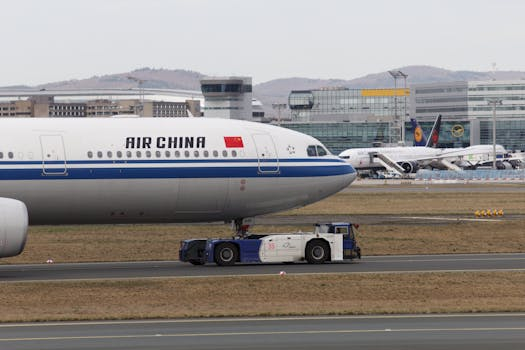Flight Crew Rest Areas Hidden from Passenger
Air travel has become an integral part of our lives, enabling us to reach faraway destinations in a matter of hours. As a passenger, we are often fascinated by the large aircraft and all the amenities it offers, from entertainment systems to meals and drinks. But have you ever wondered about the hidden spaces on the plane that you are not allowed to access? One such area is the Flight Crew Rest Area, a private and exclusive space reserved for the pilots and flight attendants. In this article, we will explore the secrets of the Flight Crew Rest Areas that are hidden from passengers.
The Importance of Rest Areas for Flight Crew
The job of a pilot and flight attendant requires immense focus and concentration. They are responsible for the safety and well-being of hundreds of passengers on board. In addition, they have to deal with changing weather conditions, unexpected turbulence, and potential emergencies. Hence, it is crucial for them to have a safe and comfortable space to rest and recharge during long flights.
Regulations and Requirements for Rest Areas
According to Federal Aviation Administration (FAA) regulations, all commercial aircraft must have rest areas for flight crew members on flights that are longer than eight hours. The rest areas must have a minimum of two bunks for pilots and two for flight attendants, along with necessary amenities like pillows, blankets, and curtains for privacy. These regulations are in place to ensure that the flight crew receives adequate rest to perform their duties efficiently.
Flight Crew Rest Areas – An Insider’s View
Now that we understand the importance of rest areas for flight crew, let’s take a peek into these hidden spaces. The location and design of the rest areas may vary depending on the type of aircraft, but they are usually located above or below the passenger cabin. Often, these areas are accessed through a secret door in the galley or a staircase hidden behind a locked door.
The Pilot’s Rest Area
The pilot’s rest area is designed to provide maximum comfort and privacy. It typically consists of two bunk beds, a sink, and a small sitting area. The bunks are equipped with a comfortable mattress, warm blankets, and a privacy curtain. With limited space, the pilot’s rest area may feel a bit cramped, but it is a welcome respite for the pilots during long flights.
The Flight Attendant’s Rest Area
The flight attendant’s rest area may have a similar setup to the pilot’s but with more bunks to accommodate the entire cabin crew. Some airlines may also have separate rest areas for junior and senior flight attendants. With the growth of luxury airlines, some rest areas may even have individual bunks with full-size beds and a personal TV for each flight attendant.
Challenges Faced by Flight Crew
Although rest areas are essential for the well-being of the flight crew, they still face several challenges. The limited space and lack of adequate facilities can result in interrupted sleep and discomfort. Moreover, the constant sound of the aircraft and the possibility of being called to handle an emergency can disrupt their rest.
The Future of Flight Crew Rest Areas
With the ongoing advancements in aviation technology, we can expect to see improvements in flight crew rest areas as well. Some airlines have already upgraded their rest areas with state-of-the-art amenities, such as adjustable lighting and temperature control, to provide a better sleeping experience for the crew. In the future, we may even see rest areas with individual sleeping pods, similar to those on long-haul trains.
In conclusion, the Flight Crew Rest Areas are a crucial aspect of air travel that often goes unnoticed by passengers. These hidden spaces serve as a sanctuary for the flight crew, allowing them to rest and recharge during long flights. As we continue to fly to distant destinations, the importance of rest areas for flight crew will only grow, and we can look forward to more comfortable and luxurious rest areas in the future.







